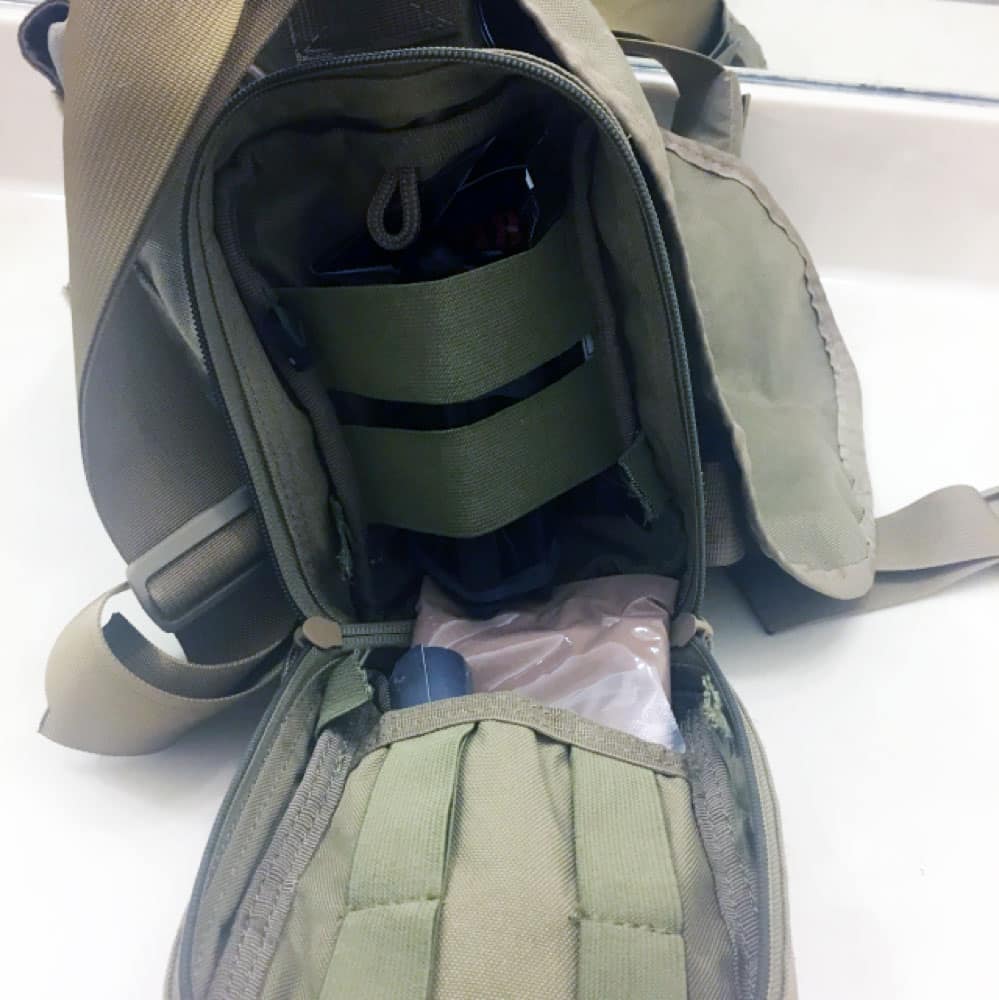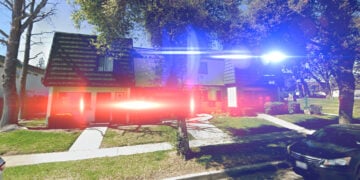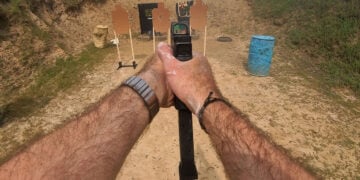
Fads come and go in any industry, and the firearms/tactical gear world is no exception. I recall about 10 years ago when tactical shoulder bags were all the rage and a lot of thinkers and pundits were advocating in favor of a bump-in-the-night/home invasion bag—ie: a grab and go tactical bag with extra mags, flashlights, trauma kit, and other items tools that might come in handy if the bad guys come a-callin’. Like all fads, it came and went—and a lot of money got spent on gear that’s probably mostly living in someone’s closet.

However, following a long conversation with a friend who’s a firm believer in the concept, I think it’s time that we revisit the bump-in-the-night (BIN, henceforth) bag. And I’ll tell you why, in mobile-friendly bulleted format.
- If you have to respond to an invasion of your home, a BIN bag simplifies your response time. Your gear and backups are in one place, ready to grab and go. Put it on, grab your shotgun or carbine, and deal with the situation at hand.
- It simplified your training. You’ve got a standard and consistent carry system that you can use while running drills and doing other training. The advantages here are faster learning curves and increased performance.
- It forces you to carry your trauma kit with you. If things do go south, the odds are pretty good that someone will sustain an injury. You’ll definitely want to be able to treat your own wounds, or take care of someone else in your household. Whether or not you render aid to the bad guy is a subject we’ve discussed elsewhere.
- On a more mundane level: BIN bags keep all your battle gear in one place, which helps you stay organized when it comes to cycling magazines and ammo, checking and changing batteries, cleaning equipment, etc. It’s easy to forget the housekeeping stuff, so anything that helps us stay on top of it is good.
- Finally, the concept is flexible. Your BIN bag can also become your trunk/car bag if you’re inclined toward a trunk gun. It could even serve to hold your competition gear for the right event. Keep it light and basic and you’ll have everything you need either at home or on the road.

So what goes into a BIN bag? Well, that depends on your weapons system, but I’d generally recommend at least a couple of extra carbine mags, a backup handgun mag or two, an extra flashlight, a bladed tool of some sort, trauma first aid supplies, and perhaps a less-lethal option like pepper spray. Don’t forget a place for your phone. If you organize things appropriately and run your drills correctly, you’ll be ahead of the game.

I’d also note that while I like high-speed-low-drag tactical gear as much as anyone else, this is one of those moments where civilian gear might be a bit better. A good sturdy messenger bag is affordable, easy to find, and doesn’t scream “guns!” when you’re moving it from house to car or vice versa. Spend the money you save on magazines and training instead.









